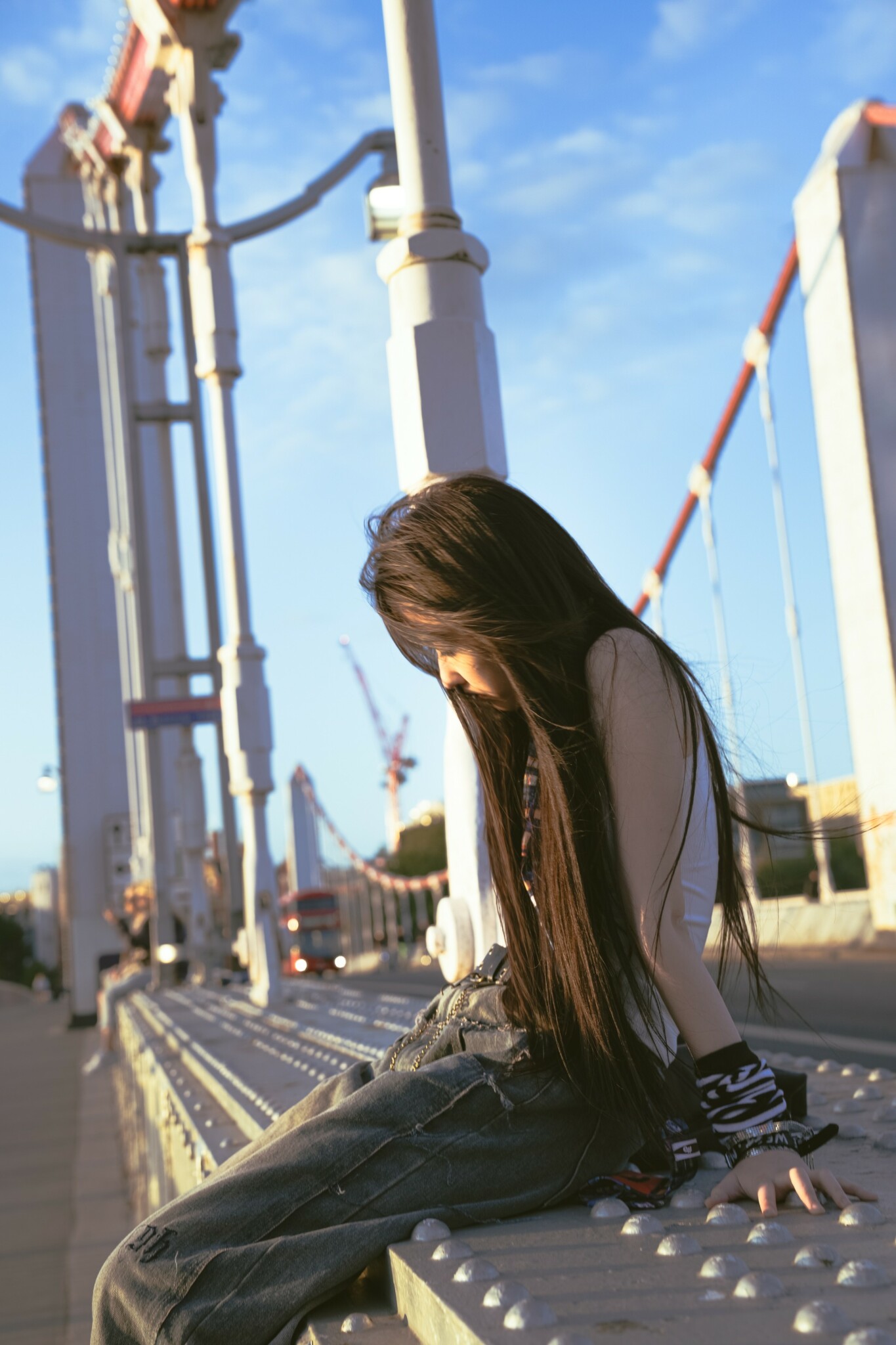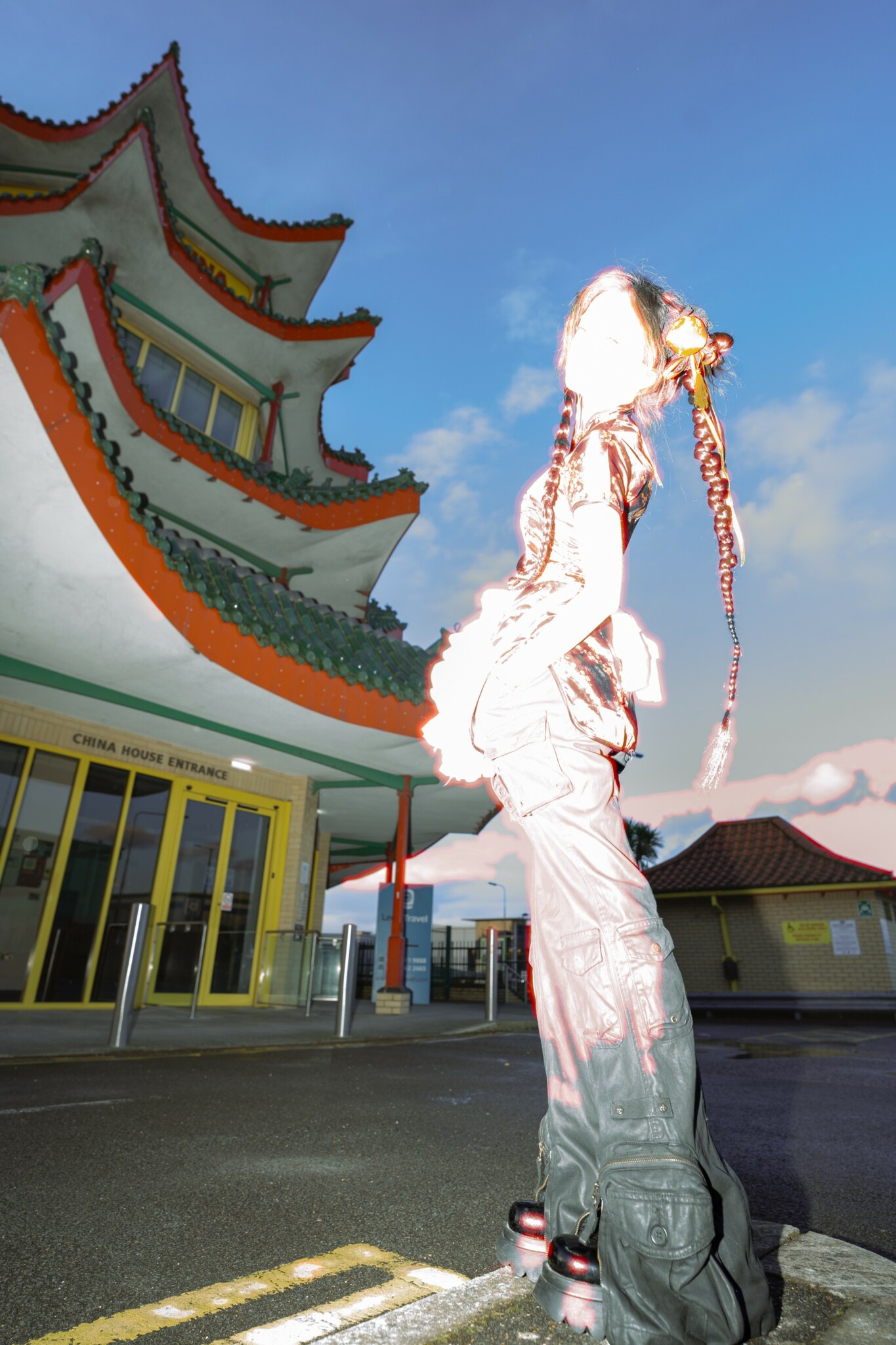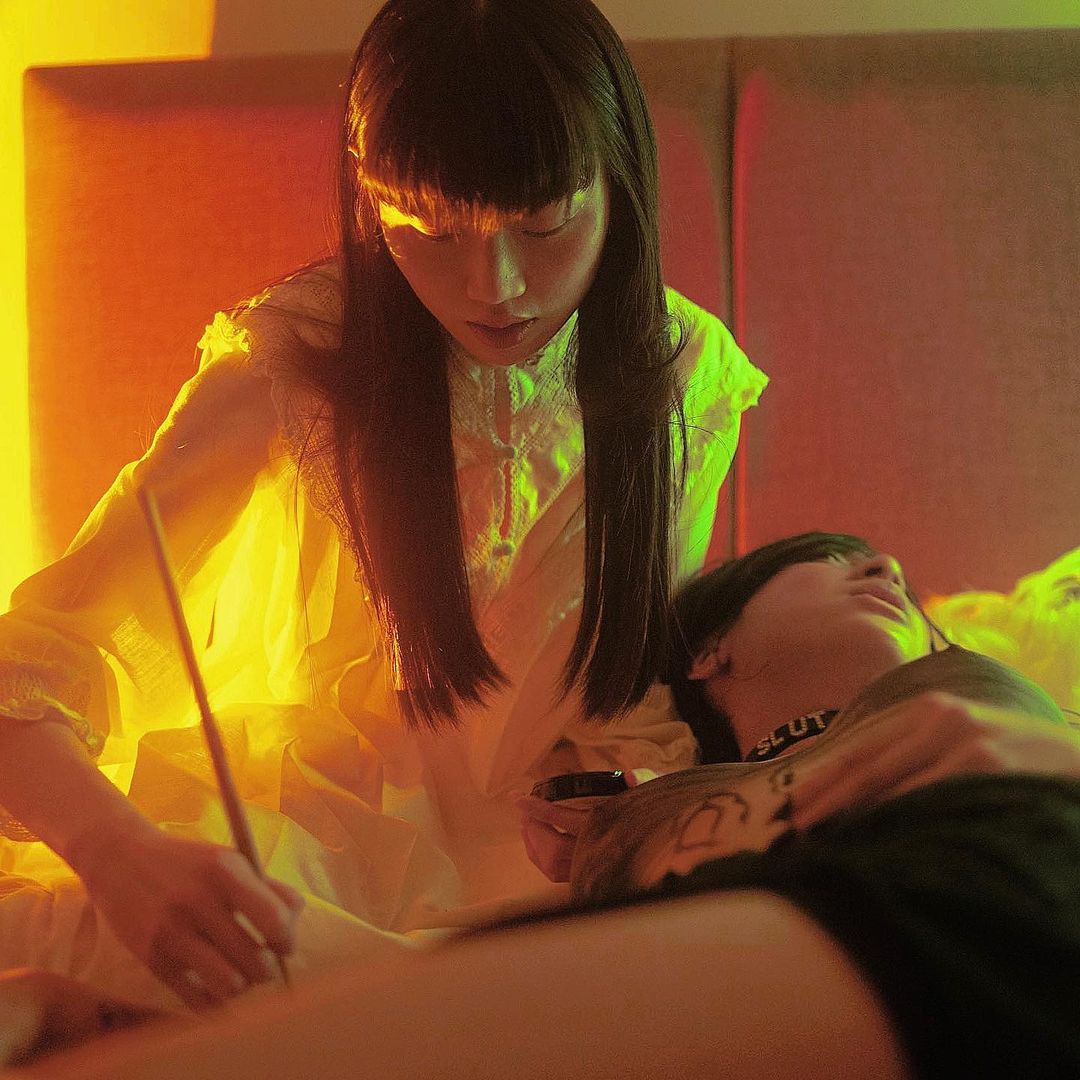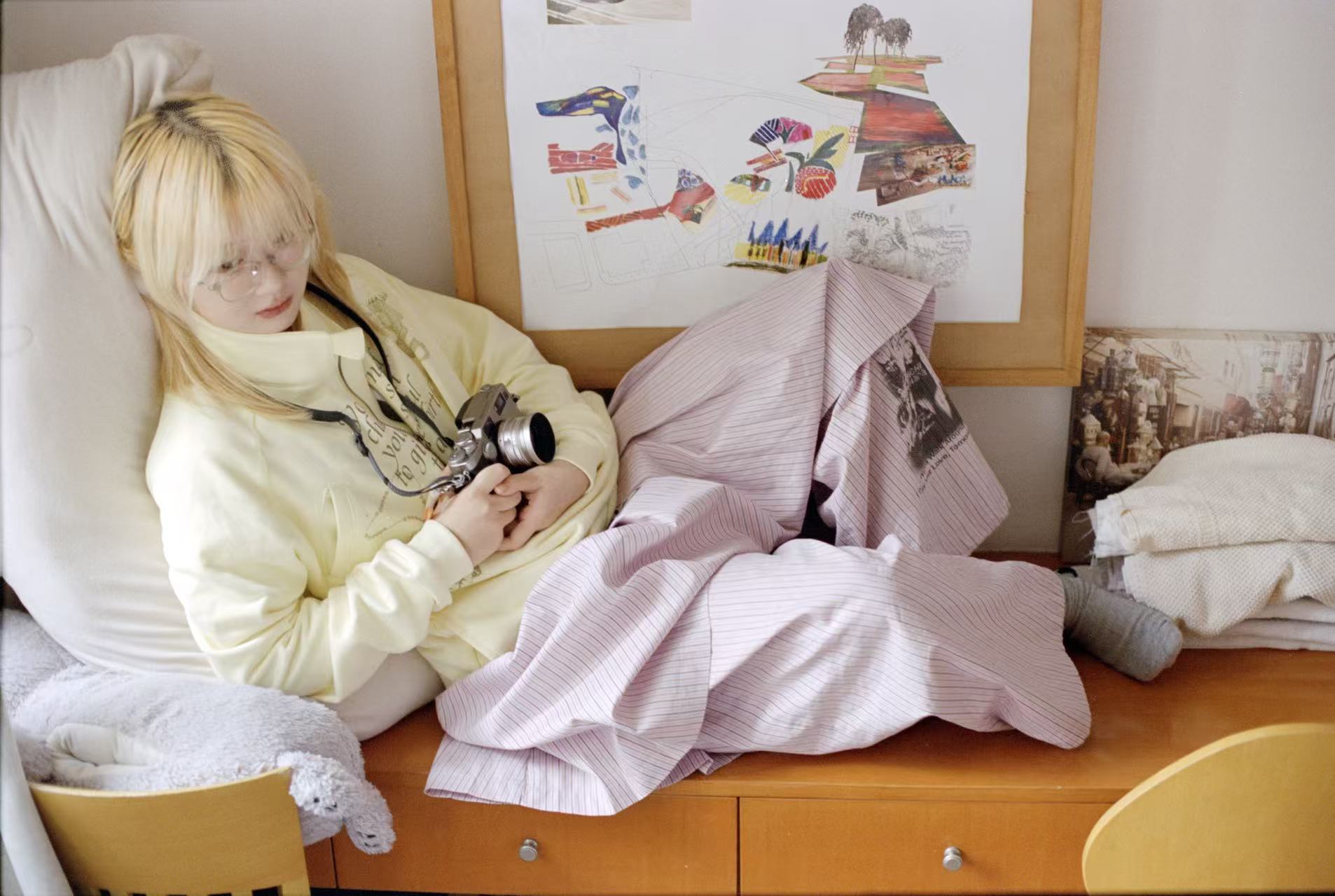We recently connected with Jiawen Wei and have shared our conversation below.
Hi Jiawen, thanks for joining us today. What’s been the most meaningful project you’ve worked on?
Strays
Links to my work: https://jiawenwei.com
“We are the stray dogs of this lonely city.”
This project is my attempt to infiltrate and document the intimate narratives of an Asian queer community in London using a Polaroid camera.
I have always struggled with a sense of belonging. In the summer of 2023, I found myself drifting through London, constantly changing living arrangements while carrying my Polaroid camera. I spent a week living on a boat, calling myself “Captain Jiji,” tried sleeping on a park bench, and even stayed in a derelict mansion bought at auction.
Eventually, I landed in a cramped 50-square-meter home shared by six Asian queer girls. The space was furnished with items scavenged from the streets, and a rescued black cat, Casper, became their unofficial seventh member. I decided to live with them for a week, documenting our shared existence. In this short yet intense period, I witnessed and captured their daily lives—how they hugged, co-parented Casper, fought over small things, got piercings together, arranged found flowers, and dressed up for queer parties across London.
This project is deeply personal. The Polaroid images reflect a raw and unfiltered narrative of our time together—of intimacy, survival, and community. In a city that often feels unwelcoming, we found ways to carve out our own space, make art, and exist on our own terms. Through this project, I wasn’t just an observer; I became part of this makeshift family, and for a brief moment, I belonged.
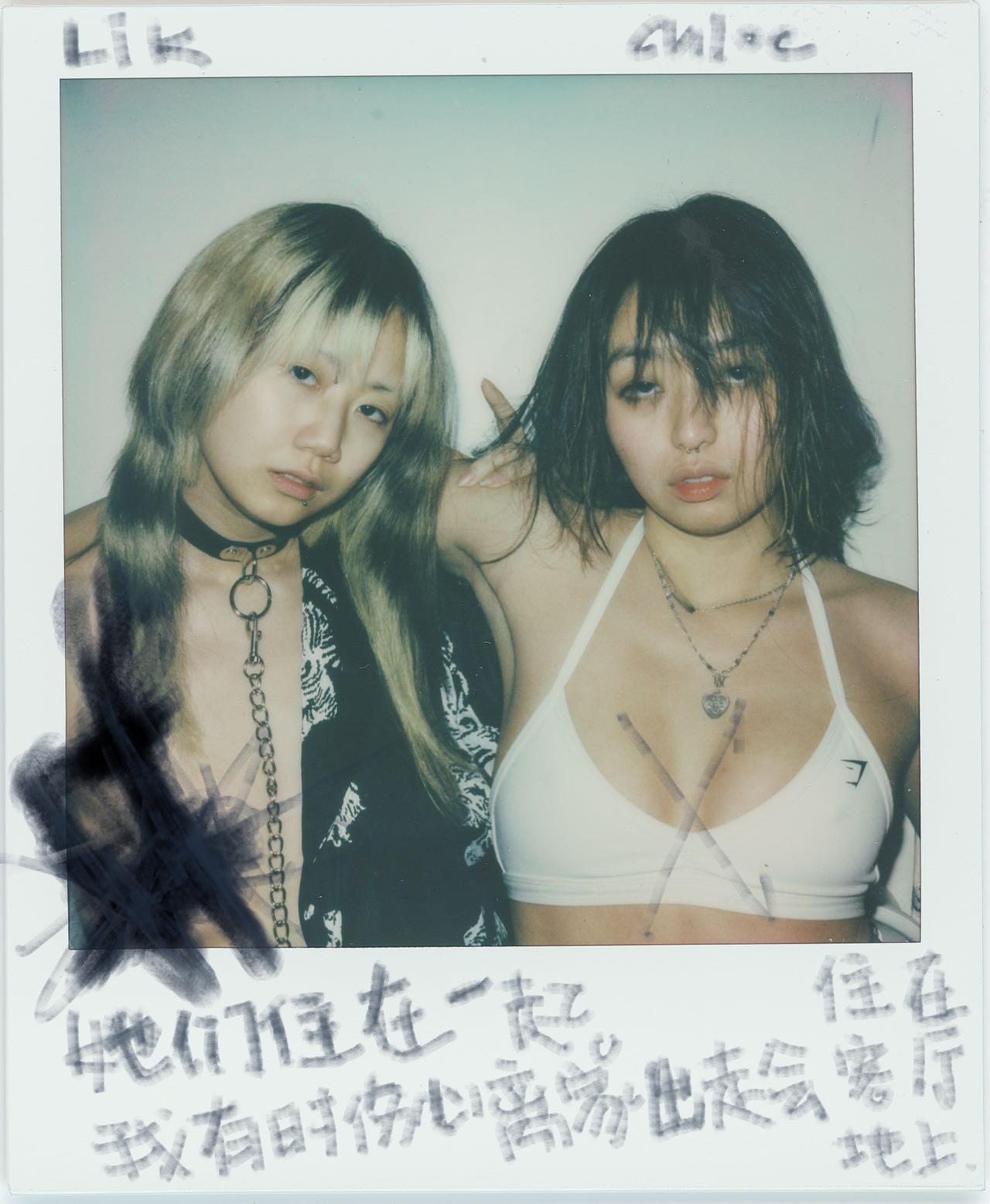
Jiawen, love having you share your insights with us. Before we ask you more questions, maybe you can take a moment to introduce yourself to our readers who might have missed our earlier conversations?
My name is Jiawen (Jiji) Wei, I am currently based in London, working as a visual artist and photographer. My practice is centered around non-verbal communication, using imagery to construct narratives beyond words. My work is deeply personal—capturing fleeting emotions, fragmented memories, and the nuances of human relationships through a blend of photography, found objects, digital processing, and traditional painting techniques.
How I Got into Photography / Art
I have always had a strong urge for self-expression, believing that emotions are at the core of human connection. My artistic journey has been driven by a desire to find universal narratives that transcend cultural and personal boundaries. Photography became a natural medium for me—it allowed me to document fleeting moments and explore deeper emotional landscapes.
I initially came into the world of photography through my fascination with storytelling. Having always struggled with a sense of belonging, I turned to artistic practice as a way to navigate and express this feeling. I started documenting the people and spaces around me, gradually expanding my practice to include mixed media and experimental techniques. Over time, I developed a focus on communities that exist on the margins—especially the Asian queer community—as I sought to understand both myself and the world through the lens of shared experiences.
What I Offer / My Creative Work
I recently concluded my solo exhibition in Barcelona, where I showcased my most personal works to date. I also self-publish zines, using them as a tangible extension of my storytelling, and the proceeds from my sales have been donated to support Asian non-profit organizations.
My next exhibition will be at Norwich’s Queer Fest, where I’ll be presenting my Polaroid series documenting the London Asian queer community—a deeply personal and unexpected journey for me.
Beyond my artistic projects, I take on a variety of commissioned photography work in London. My commissions range from fashion and commercial shoots to deeply personal portrait sessions—including projects where women simply want to document their own bodies. I remain open to themes that genuinely interest me, ensuring that each project I take on carries emotional and artistic significance.
How My Work Impacts Others / What Problems I Address
My work focuses on raising awareness for overlooked communities. Through my visual storytelling, I bring marginalized narratives into public consciousness, amplifying the voices of Asian queer women and ensuring that their stories are seen and remembered.
At its core, my photography seeks to uncover the universal human experience—to create images that allow people to see themselves in my work, to realize they are not alone. I use visual language to explore emotions that words often fail to express, forging connections between individuals through shared feelings and experiences.
My Greatest Achievements
One of my proudest accomplishments was successfully hosting my solo exhibition in Barcelona and using my zine sales to financially support an Asian non-profit organization in a time of need. Beyond that, I was honored to receive a BBA Award nomination, and one of my projects was featured in an exclusive interview with Artron, a major Chinese art media platform.
What I Want My Audience / Clients to Know
My work is deeply rooted in human connection and empathy. I bring a unique perspective to storytelling, driven by a profound passion for photography and an unyielding curiosity about the human experience.
I dedicate myself fully to each project, willing to dig deep into emotions and stories, ensuring that my work is not just visually striking but also emotionally resonant. Photography, for me, is not just a profession—it is an exploration of identity, community, and shared narratives, and I hope my work allows others to see and feel something genuine in return.
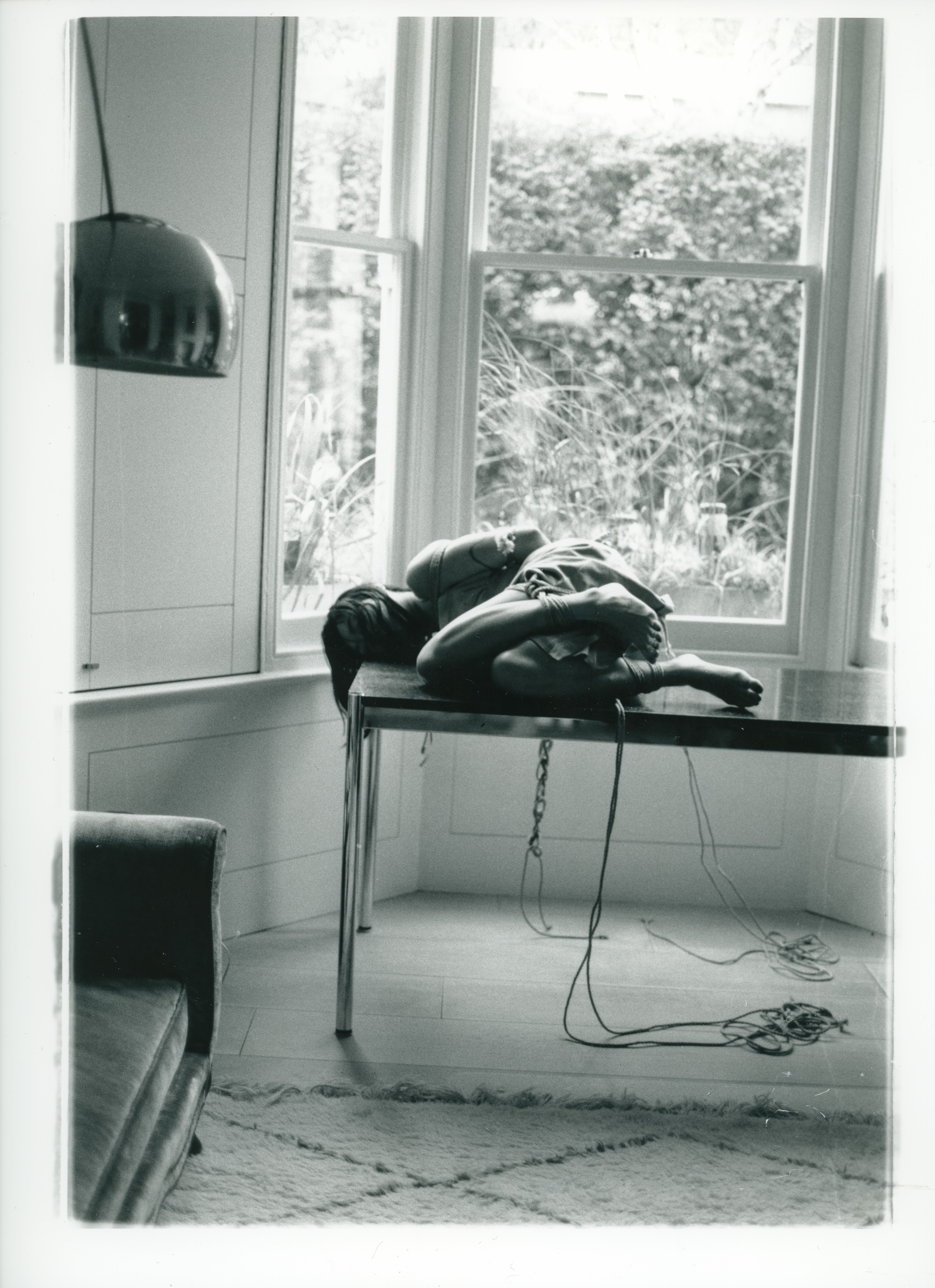
What do you think is the goal or mission that drives your creative journey?
At the core of my creative journey is a deep desire to explore human emotions and uncover shared narratives that transcend personal, cultural, and geographical boundaries. My work is driven by the need to document the lives of those on the margins, especially within the Asian queer community, and to bring their stories into the public eye through visual storytelling.
I have always struggled with a sense of belonging, and photography became my way of navigating that feeling—both personally and collectively. I see my art as a means of non-verbal communication, using images to capture fleeting emotions, moments of intimacy, and the delicate relationships between people and their environments.
One of my biggest motivations is amplifying voices that are often unheard. I aim to raise awareness of overlooked communities, particularly Asian queer women, by documenting their everyday lives—their struggles, their joy, their resilience. Through my work, I want to create a space where these narratives are not only seen but also felt. I want to challenge the mainstream narratives that often exclude or misrepresent us, offering authentic, personal, and emotional visual language instead.
At the same time, I want my audience—regardless of background—to see themselves in my work. I want my images to remind people that they are not alone, that there are universal emotions connecting all of us, even when we feel like outsiders. Whether through a Polaroid capturing a moment of quiet tenderness, or a zine that preserves stories otherwise forgotten, my mission is to use photography as a bridge—between identities, between cultures, and between people.
Ultimately, my creative journey is about documenting, understanding, and human emotion. I want to keep pushing my own boundaries, both artistically and emotionally, to continue capturing what it means to be human.

Are there any books, videos or other content that you feel have meaningfully impacted your thinking?
My approach to both artistic creation and navigating the art world is deeply influenced by queer theory, Crip theory, and the concept of compulsory able-bodiedness. These frameworks help me critically engage with the structures that shape our identities and the ways we navigate society as outsiders.
Key Theories and Scholars
Crip Theory & Queer Theory – Robert McRuer & Judith Butler
Robert McRuer’s Crip Theory: Cultural Signs of Queerness and Disability (2006) introduced me to the intersection between queerness and disability, highlighting how both challenge normative structures—whether it’s heteronormativity or able-bodied normativity. His work has shaped the way I think about who is seen and who is erased in society and, by extension, in visual culture.
Judith Butler’s theory of gender performativity also deeply resonates with my work. The idea that gender is not an inherent identity but a performance shaped by repeated social behaviors makes me question the structures we unconsciously abide by. This perspective informs my photography, especially in capturing moments where my subjects resist, subvert, or reclaim their own identities.
The Concept of Compulsory Able-Bodiedness & Wholeness
One of the major themes in my work is the tension between individuality and societal frameworks. I am particularly interested in how people adapt themselves—like malleable clay—to fit into the rigid boundaries of social expectations, often at the cost of their mental well-being. My recent projects explore this theme, using visual storytelling to examine how marginalized individuals find personal peace within the structures built by others.
As an Asian pansexual woman navigating a predominantly white, Western art world, I often feel the subtle yet pervasive presence of invisible social structures—ones that determine who belongs and who is merely tolerated. I recognize that some institutions select my work not purely for artistic merit, but because my identity itself is an attractive commodity—an “exotic” perspective that adds diversity to their programming. This has given me a heightened awareness of the ways opportunities are structured and mediated.
Artistic Influence & Creative Approach
I don’t consciously try to emulate other artists, as I prefer to approach creation with childlike curiosity, free from external constraints. However, if I had to name a photographer whose work resonates with me, it would be Nan Goldin. Her ability to capture raw, intimate, and deeply personal narratives aligns with my approach to documenting outsiders, queer identities, and alternative ways of living.
How These Ideas Shape My Entrepreneurial and Creative Thinking
I approach my career not just as an artist but as someone navigating systems that weren’t built for people like me. These theories help me see the invisible structures at play, recognize when my work is being tokenized, and find ways to reclaim my agency in those situations.
They also reinforce my commitment to creating art that raises awareness of marginalized communities—especially Asian queer women—by offering a visual language to express what often goes unspoken.
On a practical level, my understanding of power structures and societal expectations informs how I position my work within the art world, how I approach exhibitions, and how I balance artistic integrity with the demands of the industry.
Ultimately, these influences have helped me shape an artistic and entrepreneurial philosophy that is deeply personal, critical, and grounded in the belief that art should be a tool for visibility, understanding, and resistance.
Contact Info:
- Website: https://jiawenwei.com
- Instagram: @wjwjw.jijiwei
